At the start of 2020 I was a Kickstarter backer for Hero Forge 2.0, featuring colored plastic miniatures. I have since customized, ordered, and received my first miniature.
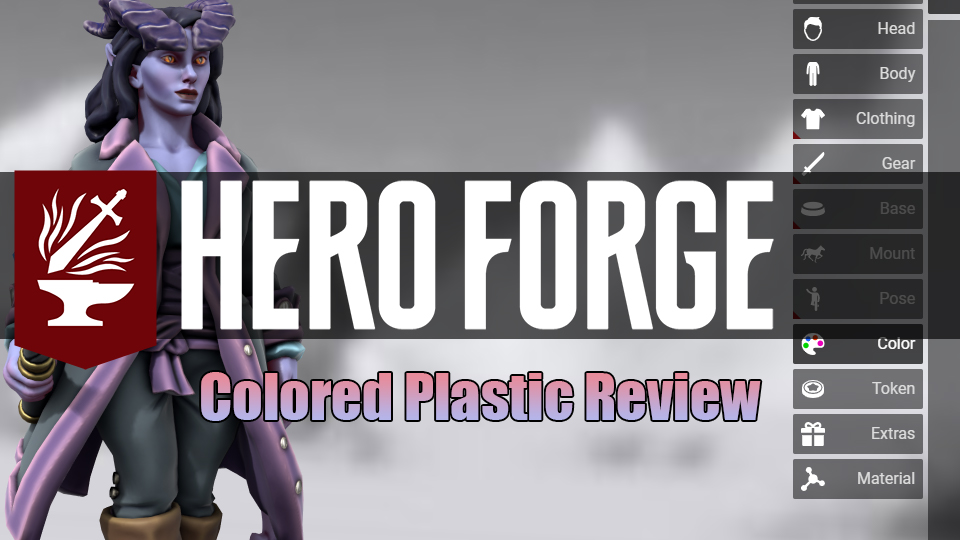
In 2017 when I revamped my website to be a tabletop RPG focused blog, two of my first columns looked at Hero Forge, a tabletop miniature customization toolkit on the web. You can read my thoughts on the build process and shipping as well as my follow-up on finding and hiring a painter.
On January 14, 2020, Hero Forge began their Kickstarter campaign for a new tool: custom printed miniatures with color. This promised not only colorization but additional customization and features to their current tool. They called it Hero Forge 2.0 Within 20 minutes they were 100% funded, an hour later they were 1000% funded, by the end of the first day they had surpassed the million dollar mark in funding. At the end of the Kickstarter campaign, over three million dollars had been promised by backers, unlocking all but two of the promised features.
At the time of this column, the color tools are locked to backing users and are still considered in beta; even between my original order and now, I’ve seen tweaks and features of the Hero Forge tools to be more precise and offer more options and customization. Some of the unlocked features have yet to be added to the site, but once all the features are unlocked the site will be unmatched for use as a character portrait and miniature generator.
Even before the Kickstarter campaign, new features were constantly being added to the tool. New body types, head types, accessories, and mounts had been established since my 2017 write-up. Following the campaign, one of the first tool updates was the ability to add even more custom nuance to a given pose; at least for the upper body (head, hair, horns, arms, hands, items, wings, and tail). The legs remain static to provided poses, likely to ensure stability/connectivity to the base.
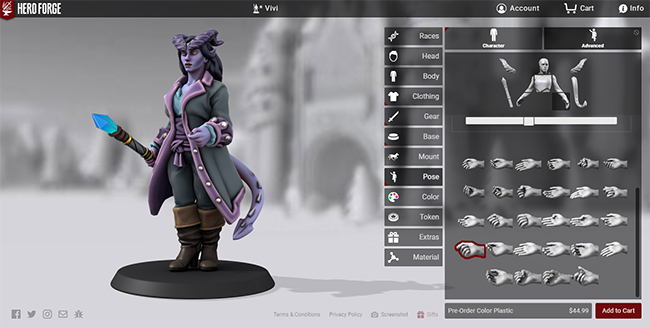
The big new feature, of course, was the ability to color within the tool. For quick color options, the tool allows for color race and themes. The race menu controls skin, hair, and tooth/bone colors. The theme menu offers pre-selected clothing color options. This allows a fast way to get ideas of what colors might work well together and offers some easy go-tos for most characters
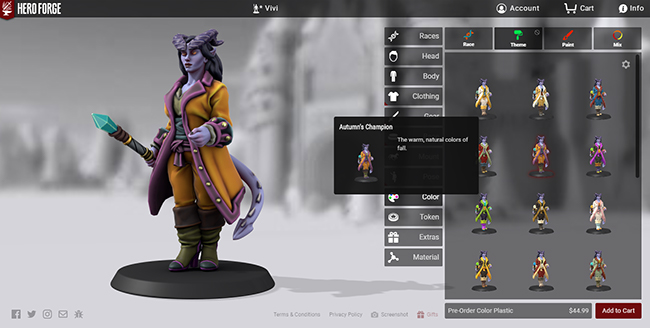
Having pre-selected colors on their own would be a boon, but a key feature is the ability to “paint” select pieces of the miniature, allowing a much more granular level of customization. The paint functionality doesn’t quite measure up to some of the ideals presented in the Kickstarter but, as stated previously, everything is still in a locked beta, so I’m not knocking any points. And even if they can’t quite get the level of nuance promised, the functionality is still very impressive considering how small tabletop miniatures run.
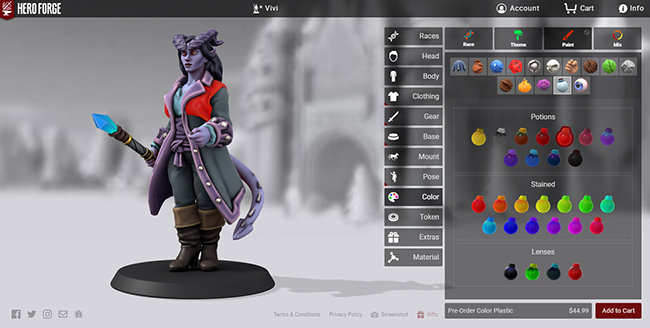
Hero Forge has updated their materials since my original reviews. The 3D printed nylon figures I originally received were porous, showing a rough quality once the paint was applied and making it hard for any precision details. Their new “Premium Plastic” option promises to be smoother and offer a greater level of paintability. For select backers and possibly in their full roll-out, Hero Forge also offers to hand-paint Premium Plastic miniatures based on the user’s selected colors, offering more detail than the option I went with. I chose Color Plastic, utilizing new “ink jet” 3D printing. This produces slightly muted colors and lacks the shading that hand-painting would allow.
Simple plastic, steel, and bronze options are also available. One can also purchase their minifigure design as a digital model if they have access to the correct software and 3D printer. For those options, a person would have to paint the miniature themselves or hire someone outside Hero Forge.
In the above screenshots, I used my more recent D&D character, Verusha, to provide examples of the tool. I have since ordered the character as a miniature but with backer demand and COVID, it will be a month or so before I receive it. My initial backer order was a version of my FFXIV character, Blue Thorsdai. As expected, some of the nuanced details like her eyes and the cat’s paws were lost, but I think the miniature still looks great and would be very suitable for play… were I to join a tabletop game that allowed Miqo’te variants. I don’t regret hiring someone to paint my 2016 Hero Forge miniatures and they still look good when used in play. The colored plastic miniature is smoother than the older prints on close inspection, but either would look as good when on a tabletop.
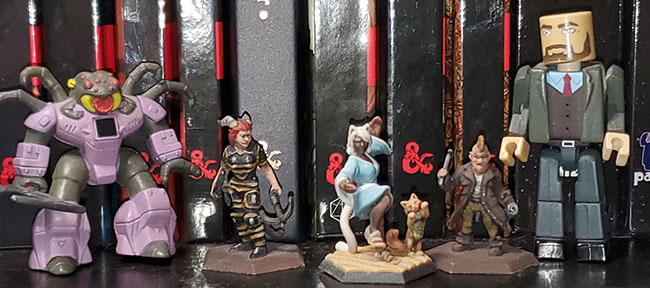
The colored plastic option is, at the time of this writing, only $15 more than the premium plastic option (and $100 less than the hand-painted option). I’ve only purchased a handful of miniatures in my adult life. I was never great at painting miniatures even when I had the time, and commissioning another person was less expensive for me than buying supplies, re-learning the skills, and applying them. While the colored plastic may be listed as less durable than the premium/hand-painted plastic, it doesn’t seem brittle at all and should be able to survive the standard rigors of play. So, for someone like me, who doesn’t paint, the colored plastic is well worth the additional cost.
What I love most about this new feature, though, is that it offers more options for playing in the digital landscape. Previously, I would use Hero Forge then take a png export into PhotoShop and use my rudimentary skills to “paint” the character. This new colorization feature means I can quickly make an avatar for character sheets. Hero Forge recognizes the growing online gaming presence and also offers a “tokenization” export so one’s miniature can be easily used in interfaces like Roll20 and Fantasy Grounds.
I’m looking forward to seeing additional unlocked features added to the tool and I hope there will be continued color refinement and nuanced options added. I do somewhat lament that one of the last features wasn’t “unlocked” by backers; layered clothing would have made things like jackets much more customizable to the characters. Should Hero Forge launch a another campaign for more customization features, I’d back it same day.
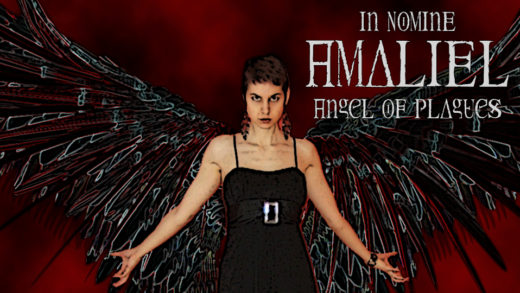
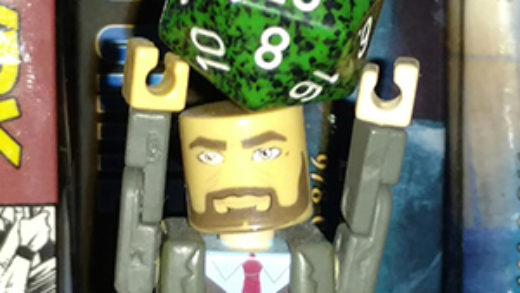
Recent Comments